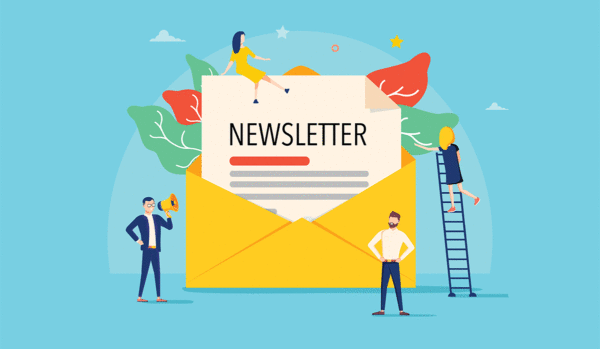The following is a hand-picked guest post from Chris Davenport. Enjoy, and you can read more about Chris below.
* * *
A simple (and kind of genius) framework to help your donor feel amazing — and keep giving
Donor communications can feel like a grind.
Whether you’re writing an appeal, a thank-you, or a report — you’re constantly trying to find the right words to keep people engaged, inspired, and giving.
And if you’ve ever thought:
“How many ways can I tell the same story?”
“What do I even say in this update?”
“Does any of this actually matter to the donor?”
You’re not alone. And you’re not doing it wrong.
The truth is:
You don’t need endless stories.
You don’t need a brand-new emotional angle every time.
You just need a simple rhythm your donor can feel—and respond to.
You don’t need a million stories.
You just need three.
And they follow a simple, powerful path.
And yes — it works whether you serve people, protect ecosystems, fund the arts, or fight for policy change.
Maybe your organization protects forests. Or fights for clean air. Or keeps art alive in schools.
You might not think of your cause as having a “beneficiary,” but you absolutely have something (or someone) at stake.
The key is to treat that thing — whether it’s a river, a painting, a policy, or a species — as a character in your story.
- What does it need?
- What threatens it?
- What changes if the donor steps in?
If a wetland is about to be bulldozed…
If a coral reef is hanging by a thread…
If a mural is being erased from a neighborhood…
You have a story.
You just need to frame it like one. And once you do, these 3 stories become your new go-to.
And once you do, these 3 stories become your new go-to.
1. The Story That Asks
What your donor’s gift WILL do
This is where the donor steps into the story — not as a bystander, but as the person who can change everything.
You share a real, unresolved situation. The stakes are high. The outcome is not yet written.
And the donor? They’re the missing piece.
Example (Human story):
“Right now, Mia is 7 years old and skipping school — not because she doesn’t want to learn, but because hunger makes it impossible to focus.
With your $25 gift, you’ll place a hot meal in front of her tonight.”
Example (Environmental):
“Right now, ancient trees that house hundreds of species are days away from being cut down.
Your gift will help protect this forest from permanent destruction.”
This is the story where their gift WILL do something powerful.
It’s full of urgency, emotion, and possibility.
2. The Story That Thanks
What your donor’s gift IS doing
Now zoom in on the moment of impact.
This isn’t a receipt or a vague “thank you for supporting our mission.”
This is a snapshot. A sigh of relief. A small-but-holy moment the donor made possible.
Example (Human):
“Mia sat down in the lunchroom with a hot meal on her tray — just like you provided. She picked up her fork, looked up at her teacher, and whispered, ‘Tell them thank you for me.’”
Example (Environmental):
“Right now, your gift is fueling a team of rangers patrolling the forest line — keeping the chainsaws out and the wildlife safe. Because of you, protection is happening today.”
This is where your donor feels the impact of their gift IS in motion — right now.
3. The Story That Reports
What your donor’s gift DID
Now you complete the loop.
This is the victory lap — but it’s not just celebration. It’s an invitation. You show what their gift accomplished and what still needs to be done.
Example (Human):
“Because of you, Mia is back in school and smiling again. She hasn’t missed a day in weeks. But this morning, a new child walked in late… head down, stomach growling.
Will you give again so they don’t have to sit through class hungry?”
Example (Environmental):
“Your gift saved this forest. You kept the chainsaws out — and the birds, the trees, the life here?
They’re still thriving because of you.
But the destruction didn’t stop. Just down the road, another ancient grove is marked for clearing.
Will you step in again?”
This story reminds them: You gave. It helped. Want to do it again?
Why This Works (and why it feels so good)
These three stories follow a rhythm that donors love — whether they realize it or not:
- The Ask Story shows what their gift WILL do
- The Thank You Story shows what their gift IS doing
- The Report Story shows what their gift DID
That framework — WILL, IS, DID — comes from Steven Screen at the Better Fundraising Company. And once you start using it, you’ll never go back.
Because when your donor sees their gift in motion, it builds trust.
When they feel what they made possible, it builds joy.
And when they’re invited to keep going, it builds momentum.
This isn’t just better storytelling.
It’s better fundraising.
And it feels better to send, too.
Bonus Tip: Want more stuff like this?
You’ll love the QuickApply Library. [https://nonprofitstorytellingconference.com/quickapply-library/]
It’s full of fast, practical mini-guides to help you raise more money with better stories. These aren’t the same old tips — most of what’s in there is new, or at least totally re-framed to be easier and more effective.
No fluff. Just storytelling tools that work.
* * *
Steven says: “Chris Davenport is the founder of the Nonprofit Storytelling Conference – the most practical and impactful fundraising conference there is. Chris has trained thousands of Fundraisers to use story-driven communication to raise more money and build deeper relationships with donors. Check out his ‘QuickApply’ library if you’d like to know more, and I hope to see you at this year’s conference!”






